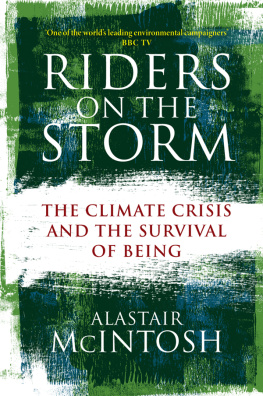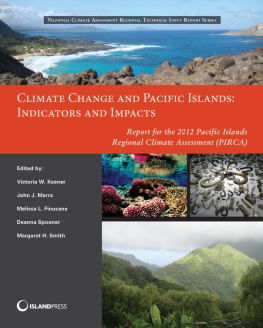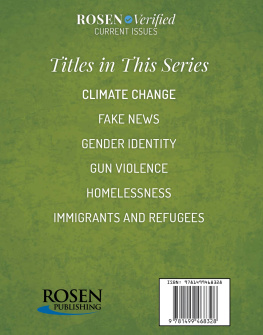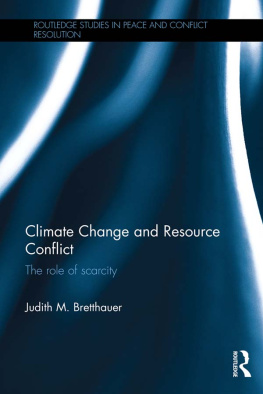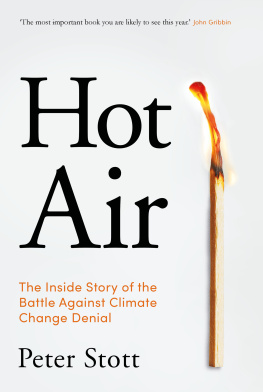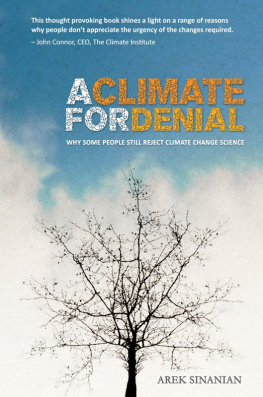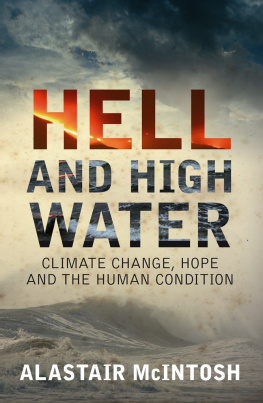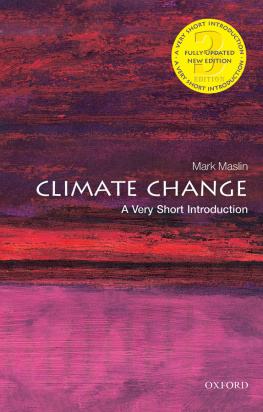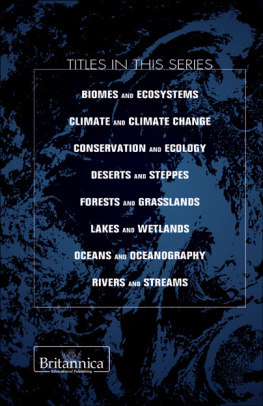Contents
Guide
Pagebreaks of the print version
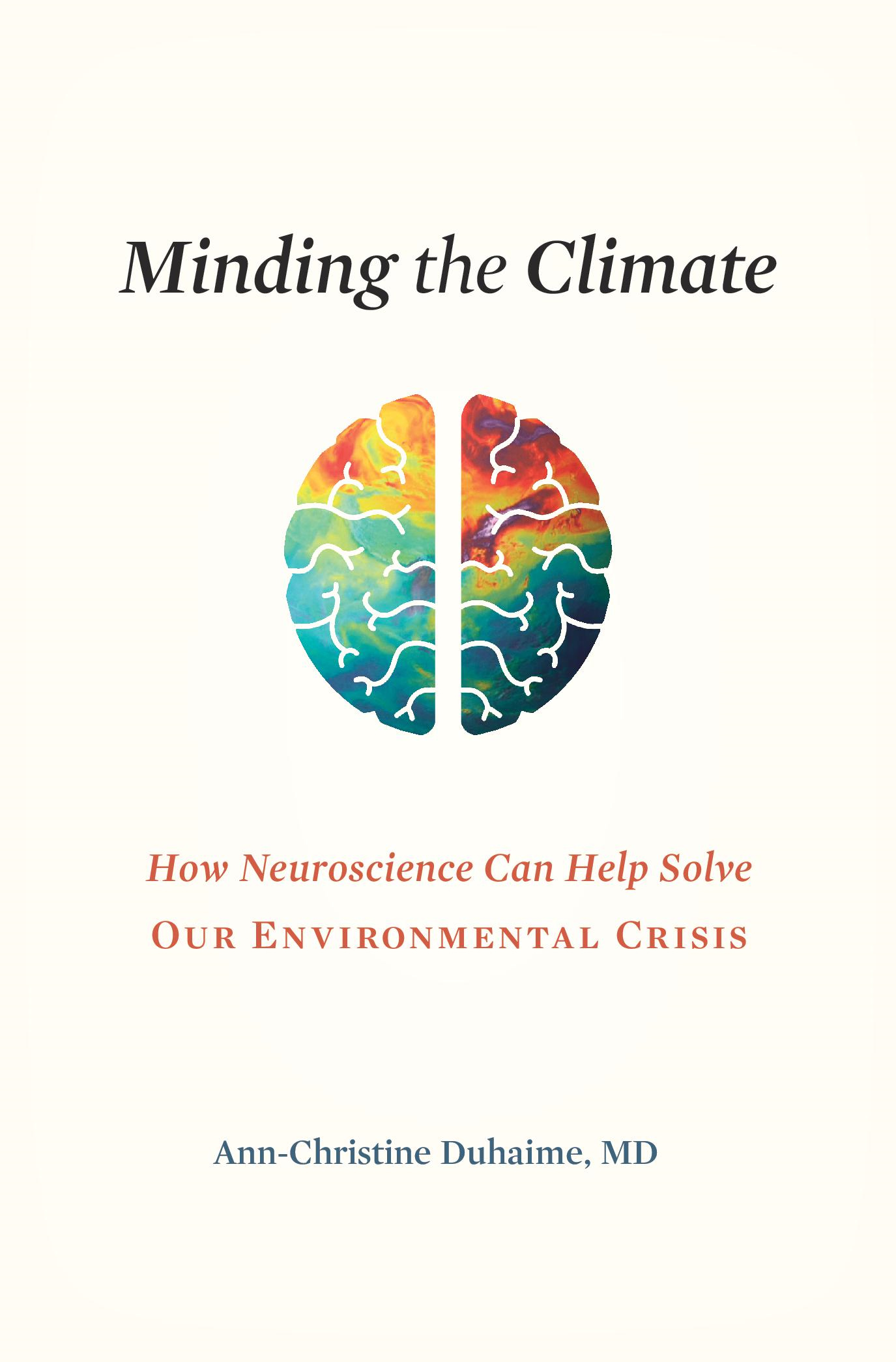
Minding the Climate
How Neuroscience Can Help
Solve Our Environmental Crisis
ANN-CHRISTINE DUHAIME, MD

Cambridge, Massachusetts | London, England | 2022
Copyright 2022 by the President and Fellows of Harvard College
All rights reserved
Jacket illustrations from iStock|Getty Images Plus: climate emissions map by Janiecbros; brain silhouette by M_Pavlov
Jacket design by Lisa Roberts
978-0-674-24772-7 (cloth)
978-0-674-28762-4 (EPUB)
978-0-674-28761-7 (PDF)
The Library of Congress has cataloged the printed edition as follows:
Names: Duhaime, Ann-Christine, author.
Title: Minding the climate : how neuroscience can help solve our environmental crisis / Ann-Christine Duhaime, MD.
Description: Cambridge, Massachusetts : Harvard University Press, 2022. | Includes bibliographical references and index.
Identifiers: LCCN 2021062984
Subjects: LCSH: Neuropsychology. | BrainPsychological aspects. | Climate change mitigation. | BrainEvolution. | Neural circuitryAdaptation.
Classification: LCC QP360 .D685 2022 | DDC 612.8dc23/eng/20220316
LC record available at https://lccn.loc.gov/2021062984
To my family, my patients, and children everywhere
Contents
Its 8 P.M. and Im just about to pack up and leave the hospital for the night when the pager bleats. Its my resident, the junior neurosurgeon-in-training on for emergency calls, who quickly summarizes an urgent consult from the pediatric intensive care unit (PICU). Its a six-year-old. Hes on his third liver transplant for a congenital disease, and his blood clotting is way off. His scan shows a 5-centimeter left brain hemorrhage with shift, and hes comatose, with a dilated left pupil and a dropping heart rate. They want us to operate. I ask if the PICU team has corrected his blood clotting and am told theyve given him factor, and he should be good to go to surgery. I join the resident in the operating room after stopping briefly to meet the family and explain as gently as possible that while well do our best, this is a grave situation. We may not be able to control the hemorrhage, and their child may not survive the surgery. They nod numbly and cry quietly. After months in the hospital, they cant do much more.
In surgery, after we suction out the bulk of the clot, the brain continues to ooze from every surface weve touched. I ask the circulating nurse to call the transplant attending and ask him if theres anything else they can do medically to help the blood to clot. While she holds the phone to my ear, I am told theyve given appropriate correctives, and the bleeding should be easy to control. I invite them to come look, because it isnt easy to controlin fact, its impossible to control. After using every hemostatic agent we have in the hospital and every kind of transfusion that might be helpful and every way to apply gentle pressure to the welling surfaces, we finally recognize that we can only slow, not stop, this hemorrhage. We will have to close up enough to get him back to the PICU and wait. He probably will not survive the night.
Other children fare better. Their seizures are localized with magnetoencephalography and suppressed with minimally invasive techniques, their tumors are resected with help from computerized stereotactic image guidance or laser ablation, their infections successfully overcome with fifth- and sixth-generation designer antibiotics. They pass in and out of our medical lives, but the traces they leave pale in comparison to those of the children we cant help. Both the successful and the futile treatments require enormous resources in our advanced medical system. New machines, tests, and technologies are added every day, requiring specialized spaces, protocols, and people. We are trained to treat the child before us and not to think of the resources or the energy it takes; if something exists that might help, our job is to think of it and to use it. We must not be distracted by larger issues of who gets what.
Meanwhile, on other continents, desperate families risk everything to flee civil wars made worse by a decade of drought. In places where population growth is exploding, the average-age citizen is too young to vote but not too young to suffer when flooding occurs and disease follows, and entire extended families are wiped out. Others live in economic and spiritual poverty, because traditional ways of life and the rituals and society that sustained them are being swept away by physical alteration of a human-changed planet. Closer to home, fires and floods and droughts wreak havoc; plastic litters everything. Those who already are the most disadvantaged bear the biggest burden, as power plants and polluting industries disproportionately sully their neighborhoods. Parents everywhere worry about pesticides and toxins and rising temperatures. But we are the good guys. Our hospital produces cutting-edge therapies and daily small miracles along with enormous quantities of carbon dioxide, trash, and poisonous waste that threaten the very futures weve worked to make possible.
Mostly, we compartmentalize these contradictions. Our brains allow for this.
The American Academy of Pediatrics has stated that climate change is the biggest public health problem we face as a species. This affects all of us and will affect people all around the worldfirst, the most vulnerable, and children in particular. But while we know this intellectually, and it makes us feel bad, and often helpless, it doesnt typically influence our day-to-day behavior. The conflict between this truly wicked problemone that is complicated, involving many intersecting and contradictory features and without a simple solutionand our values and actions in our daily tasks was the impetus for this book.
As most health-care providers who care for children can attest, it is an extraordinary privilege and is tremendously rewarding to have the opportunity to help patients and their families through medical crises. I chose my career at a time before climate change was clearly recognized, but even then, the problems of exponential population growth and environmental threats seemed to me to be the most consequential ones to tackle. The interdependence of all life forms seems an obvious fact of biology, and we ignore it at our peril. Yet I couldnt escape the hypnotic pull of fascination with the brainthe means and mechanisms of why we are who we are. Like most neurosurgeons, I can remember vividly the first patient, the first case, the moment I was hooked. No other career could allow me to experience the utter amazement of seeing the human brain in action, up close and tangible, with the chance to influence someones life for the better by quelling a threat to this most awesome invention of naturethe very essence of a persons existence.
Just as engineers and artists and cooks perceive the world filtered through what is on their minds most of the time, neurosurgeons are immersed in the brainhow its designed, how it develops, how it is injured and repaired, how it interacts with the world to create and modify every unique person through all the phases and changes of life. We observe these things in our patients recovering from injuries or surgery, from watching them grow up as we follow them for chronic conditions, and I saw them in my laboratory research on brain recovery and plasticity. From the perspective of many of us in the neuroscience fields,


